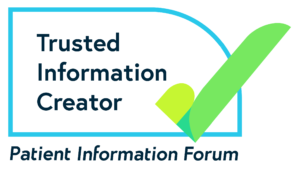Migraine in pregnancy
Important considerations for managing migraine in pregnancy
Hormonal changes in pregnancy
How a pregnancy might affect your migraine and how you will manage is a common question for women who have migraine and are trying to get or are pregnant. Key issues include what medicines are safe to use and whether your attacks will change, including whether you will have aura for the first time.
Hormonal change is a common trigger for women with migraine.
During pregnancy, oestrogen levels increase sharply, while progesterone levels decrease and rise again towards the end of the pregnancy.
Overall migraine improves during pregnancy especially during the second and third trimesters. This improvement may be due to the increased oestrogen levels and increased levels of natural pain-killing hormones (endorphins).
These hormones are several times higher during pregnancy, and though the relief from migraine attacks they provide might last the whole pregnancy, the levels settle back down after delivery, normally allowing migraine attacks to return.
However, not everyone will see an improvement in their migraine, especially in the early weeks of pregnancy. For some women, their migraine is unaffected. Some women experience worsening migraine during pregnancy although this is rare.
During breastfeeding, stable oestrogen levels continue to be protective against having headache again after pregnancy.
However you are affected, it can help to identify any migraine attack triggers that you have, such as lack of sleep, stress, missed meals and dehydration.
Planning a pregnancy
If you are taking regular medication for your migraine and are planning a pregnancy, you should see your doctor for advice on the management of your migraine before and during pregnancy, after the birth and while you breast feed.
Migraine without aura in pregnancy
Studies show that migraine without aura improves after the first three months of pregnancy for about 7 out of 10 women. This is likely due to the impact of stable oestrogen levels.
Migraine with aura in pregnancy
If you experience migraine with aura you are more likely to continue to have attacks during your pregnancy. If you experience migraine for the first time while you are pregnant it is likely to be with aura.1
If you do think you are having migraine for the first time while you are pregnant it is important to visit your GP so the causes for your headache can be checked and treated if necessary.
Medication during pregnancy
During pregnancy and breastfeeding it is preferred to avoid using medicines where possible.
If you are taking any preventive treatments, you should discuss stopping these with your doctor. However, if migraine attacks occur and present a risk to you and your baby, your doctor may offer some safer treatments.
Most of the evidence for the safety of drugs in pregnancy is collected from experience as these drugs cannot be tested on pregnant or breast-feeding women. This means the advice regarding drug treatments for migraine in pregnancy will usually be made with caution.
However, poorly controlled headache can lead to stress, sleep deprivation, depression and poor nutritional intake which in turn can have harmful effects for mother and baby.
Therefore, if non-drug treatments are not effective, a treatment choice can be made, considering all the benefits and possible risks, in discussion with your doctor. Bumps (best use of medicines in pregnancy) provide a range of information about different medicines and pregnancy.
Acute attack treatment
If drug treatment is essential, depending on individual medical history and other conditions:
- Paracetamol is considered safe during pregnancy and breast feeding. This should be taken in soluble form at the earliest signs of an attack.
- Ibuprofen may be considered in the first and second trimester but avoided in the third due to increased risk of complications. If NSAIDs have been used after the second trimester, a review with an obstetrician may be recommended.
- Triptan2,3 – Sumatriptan is the preferred triptan in pregnancy and breastfeeding because there has been more experience of its use. A few large pregnancy registries covering more than 3,000 pregnancies, have analysed the use of other triptans, (including rizatriptan, zolmitriptan and eletriptan) and found no major congenital defects. The risk of major malformations has been reported as similar to the risk in the general population. However, specialist advice may be needed, especially if there are other medical problems.
- Avoid aspirin or opiates for migraine in pregnant or breastfeeding women2.
- Anti-sickness treatment may be needed for migraine and the following have been used in pregnancy: cyclizine, ondansetron and prochlorperazine. Domperidone and metoclopramide are probably best avoided in the first three months, but this is a choice to make in discussion with your doctor.
- Headache clinics may offer a greater occipital nerve block, which is a small injection of a local anaesthetic and steroid that is injected into the back of the head, underneath the skin into the muscle around a large nerve which is involved in headache disorders. This is a quick procedure which can provide relief for weeks or months. It is safe in pregnancy.
Preventive treatment
For preventive treatment, you and your doctor will consider what might be the best option in each situation. It is recommended that you or your doctor should consult a specialist to consider the safest preventive treatment for you. Low doses of propranolol and amitriptyline have been used safely for some people, but these are all decided on an individual basis weighing up the risks of not treating.
If available, single pulse transcranial magnetic stimulation (sTMS device) is considered safe during pregnancy and breastfeeding (for acute and preventive treatment).
The first three months of pregnancy (first trimester)
During the first three months the symptoms of pregnancy can make your migraine worse. Morning sickness can mean that you feel like eating and drinking less which can cause low blood sugar and dehydration. If you are not careful this can make your migraine worse. You should try to eat small frequent meals and drink frequent small amounts of water to prevent this. You will also be helping reduce any pregnancy sickness.
After the birth
For some women migraine returns with the return of their periods. Some mothers find they have a bad attack within a couple of days of giving birth. This may be due to the sudden drop in oestrogen levels after the birth. Exhaustion, dehydration, erratic sleep and low blood sugar after giving birth may all play a part.
Breastfeeding
If you breast feed your baby it is still best to avoid medication as far as possible because the baby will be taking whatever you take through the milk. It is better to avoid using medicines where possible and there are several non-drug treatments available.
If non-drug treatments are not effective, a treatment choice can be made, considering all the benefits and possible risks, in discussion with your doctor.
These can be simple painkillers for when you have a migraine attack such as ibuprofen and paracetamol which can be taken as normal during breastfeeding although aspirin should be avoided as a painkiller.
Sumatriptan use in breastfeeding is considered safe as very small amounts of the drug are available in the breastmilk. Less evidence has been collected on the other triptans and as such breastmilk may be best discarded if breastfeeding 24 hours after use of these triptans as extra safety precaution.
If you require or had been taking preventive treatments for your migraine, you should discuss these with your doctor.
If you need to take aspirin or other non-recommended medication, such as the anti-sickness drug metoclopramide, whilst you are breastfeeding it is best not to breastfeed for 24 hours after the last dose. Ideally, keep some expressed milk in the freezer for such occasions; otherwise, you will need to give formula milk. Although you may feel too unwell to do so, it is best to express milk at the usual feeding times but this will need to be thrown away. This can help ease discomfort as the breasts become engorged with milk and will help to prevent milk production falling.
Complementary and alternative medicine
Non-drug treatments certainly can be helpful, and massage, acupuncture, relaxation and biofeedback have been found to be useful by some. Some women also find applications of heat or cold to the head can be useful.
Many women also prefer to take complementary and alternative medicines such as homoeopathic and herbal remedies rather than traditional medicines whilst they are pregnant, considering them to be milder.
However, some complementary treatments can have an unwanted effect on your pregnancy just as conventional medicines can. For instance, some women find aromatherapy massage very helpful, and may be unaware that some essential oils (rosemary for example) need to be avoided.
Reflexology treatment is not always advisable during pregnancy, and all complementary medicines should be taken under the supervision of a qualified practitioner. Feverfew should not be used during pregnancy.
The best advice is to take as few medicines as is realistically possible for you, and at the lowest effective dose, if needed. The use of any drugs or herbal remedy to treat your migraine during pregnancy and whilst breast feeding is a balance of risk and benefits, taken with medical advice. Any medication you do take should be recorded in your pregnancy notes.
As far as you can, strive for a balance in activities and get sufficient rest to avoid migraine attacks where possible. Not everyone is able to stop and go to bed, but planning ahead, setting a regular routine and delegating work or household tasks whenever possible can often help.
Useful organisations
The Breastfeeding Network
Provide support and information for breastfeeding women and others.
Helpline: 0300 100 0212
Website: www.breastfeedingnetwork.org.uk
BUMPS (best use of medicines in pregnancy)
Provides reliable, evidence-based, and accurate information about use of medicines in pregnancy, in the form of freely available patient information leaflets called ‘Bumps‘ (‘Best Use of Medicines in Pregnancy’).
Website: www.medicinesinpregnancy.org
About our information
 This information has been written by The Migraine Trust Information and Support Services team. It has been reviewed by our panel of expert health professionals and people affected by migraine.
This information has been written by The Migraine Trust Information and Support Services team. It has been reviewed by our panel of expert health professionals and people affected by migraine.
Our information has been awarded the PIF TICK quality mark for trustworthy health information.
If you have feedback on our information, please get in touch at: feedback@migrainetrust.org
References for our information are available on request.


